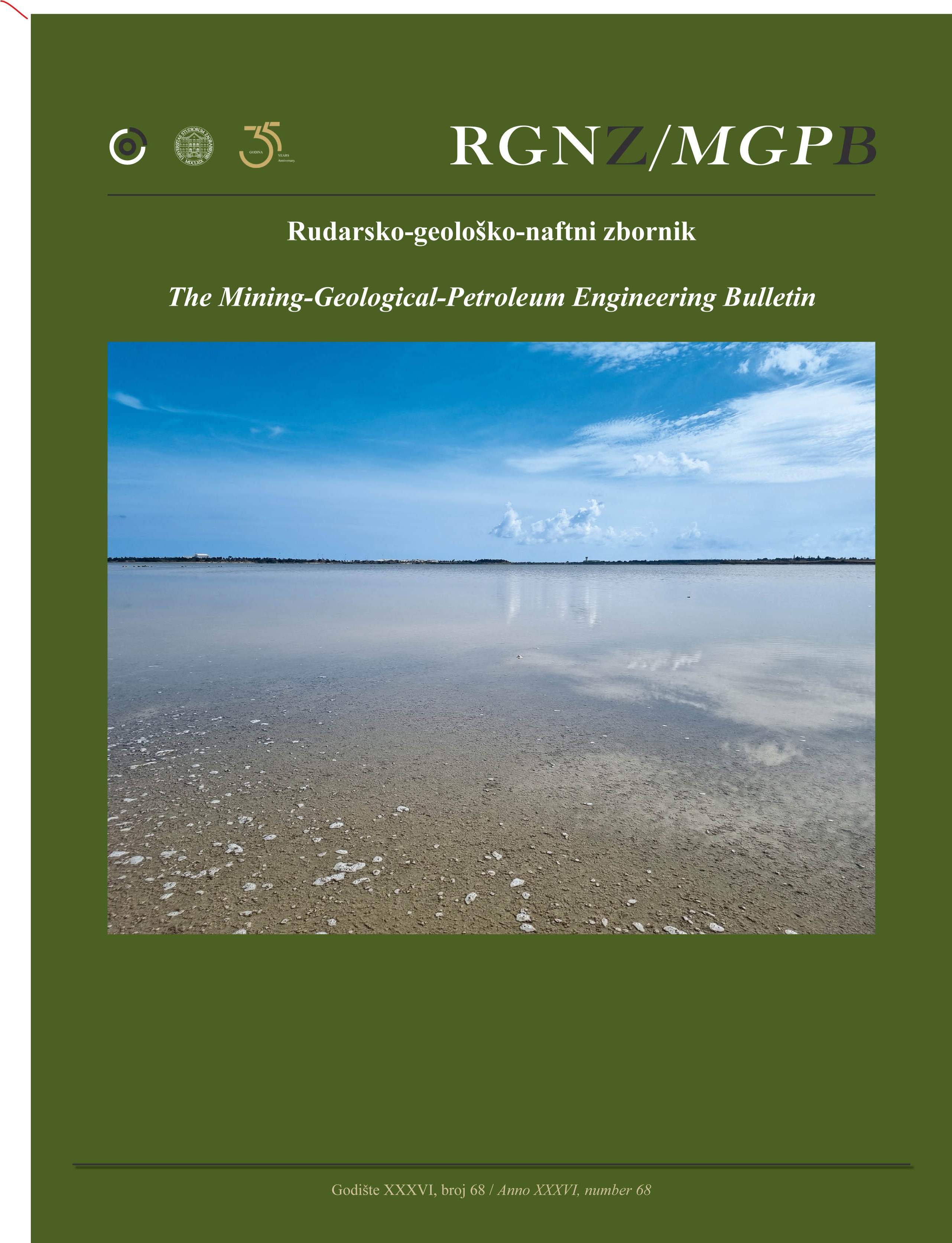Geological investigations and production planning by identification of the discontinuities and rock mass blocks in dimension stone quarries: a case study
DOI:
https://doi.org/10.17794/rgn.2024.2.7Keywords:
dimension stone, discontinuities modeling, rock fractures, geological investigations, waste productionAbstract
The dimension stone industry faces a significant environmental challenge due to the large amount of waste produced during the production process. About 51.3% of the materials extracted from dimension stone quarries worldwide end up as quarry waste. The presence of discontinuities and fractures primarily causes this waste. However, by examining the characteristics of these discontinuities and fractures and identifying in-situ blocks of the rock mass, it is possible to reduce the amount of waste produced during dimension stone quarrying. This study focuses on an abandoned quarry bench of the Lashotor quarries complex in the Isfahan Province, Iran. Due to high waste production, the quarry bench was left unused. The study aimed to identify the in-situ blocks of the quarry bench by examining the characteristics of the rock mass's discontinuities and fractures. The authors used a modified algorithm to identify and grade all the quarry bench blocks based on the target market. The study revealed that some blocks in the abandoned quarry bench could be supplied to the target market, and the bench has the potential for block extraction. The algorithm's modification based on the shape factor of blocks is an important innovation that increases the accuracy of block determination compared to previous methods. Overall, this algorithm can be used as a decision-making tool in extracting or not extracting the quarry bench of dimension stone quarries and implementing an optimal cutting pattern to reduce waste production.
Downloads
Published
How to Cite
Issue
Section
License
Copyright (c) 2024 Mohammad Hossein Jalalian, Raheb Bagherpour, Mehrbod Khoshouei

This work is licensed under a Creative Commons Attribution 4.0 International License.
Creative Commons-BY
Authors who publish with this journal agree to the following terms:
In agreeing this form, you certify that:
- You read the ethical codex of the RGN zbornik available at journal web.
- You submitted work is your original work, and has not previously been published and does not include any form of plagiarism.
- You own copyright in the submitted work, and are therefore permitted to assign the licence to publish to RGN zbornik.
- Your submitted work contains no violation of any existing copyright or other third party right or any material of an obscene, libellous or otherwise unlawful nature.
- You have obtained permission for and acknowledged the source of any illustrations, diagrams or other material included in the work of which you are not the copyright owner.
- You have taken due care to ensure the accuracy of the work, and that, to the best of your knowledge, there are no false statements made within it.
- All co-authors of this submitted work are aware of, and in agreement with, the terms of this licence and that the submitted manuscript has been approved by these authors.
Publication licence
You retain copyright in your submitted work, according to journal license policy (CC-BY). By signing this form you agree that RGN zbornik may publish it under the publication licence. In summary the licence allows the following:
Anyone is free:
- To copy, distribute, display, and perform the work.
- To make derivative works.
Under the following conditions:
- The original author must always be given credit.
- The work may not be used for commercial purposes.
- If the work is altered, transformed, or built upon, the resulting work may only be distributed under a licence identical to this one.
Exceptions to the licence
In addition to publishing the work printed under the above licence, RGN zbornik will also enable the work to be visible online.
The journal editorial can change the licence rules anytime but it cannot retroactively restrict author(s) rights.


